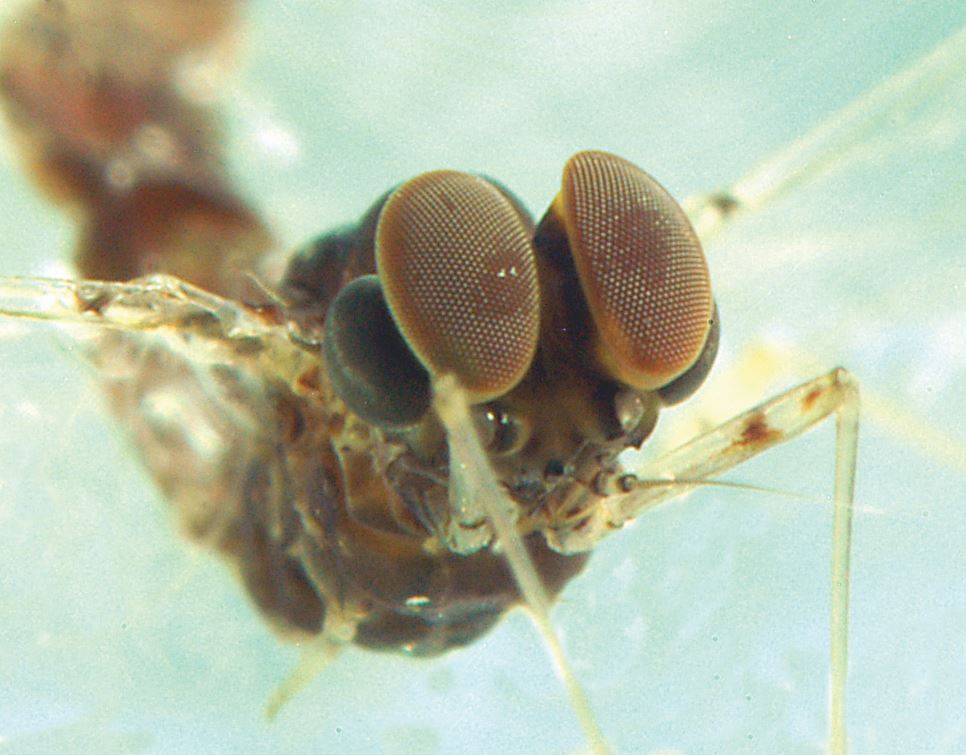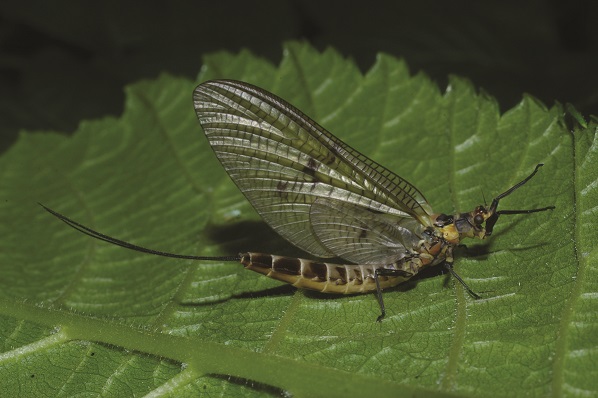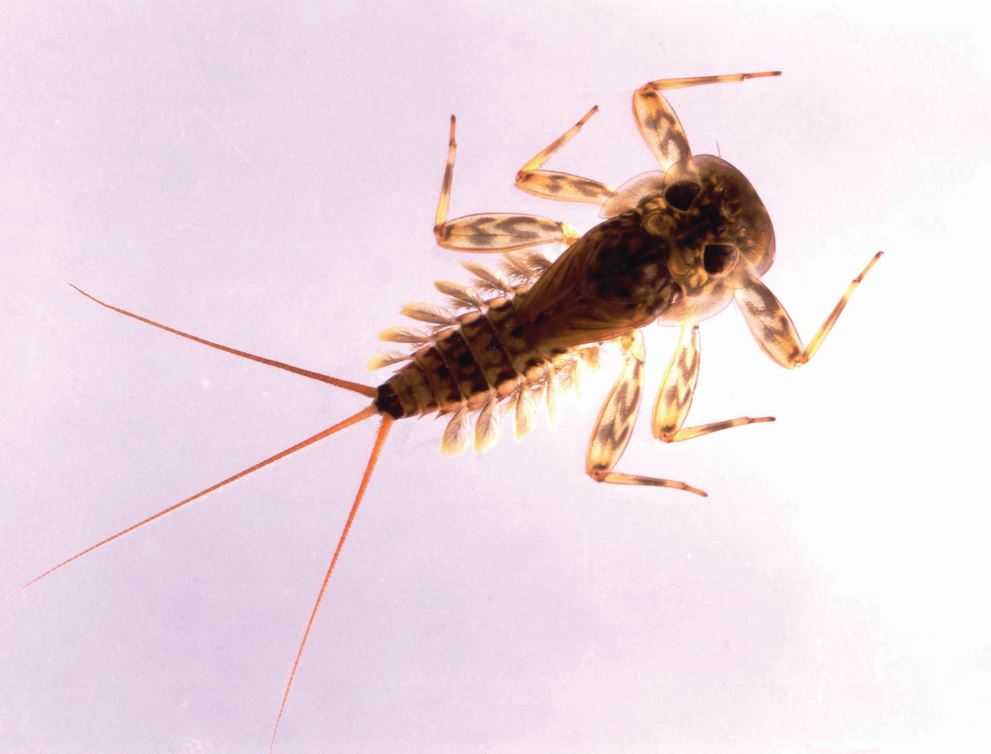Arguably the most primitive of the winged insects, mayflies are generally recognised by their triangular fore wings held vertically above the body at rest.
Adults are a familiar sight by the side of freshwater bodies and they are particularly well known to anglers, who have given names to many of the common species, both in Europe and N. America. They are unique among the insects in having a winged, pre-adult stage, known as the subimago (or the ‘dun’ to anglers) which moults into the adult (or ‘spinner’) stage.
Adult mayflies have two main functions, to reproduce and to disperse, and morphological diversity between the main families is consequently limited. They all have short antennae and large eyes, especially in the males, and there are no functional mouthparts because neither the subimago nor the adult can feed.
 Turbinate eyes in male Centroptilum sp. Credit Peter Barnard
Turbinate eyes in male Centroptilum sp. Credit Peter BarnardThe large fore wings have a complex network of veins, and the venation is used in the recognition of families and genera; the hind wings are much smaller and are even lost in some families. At the apex of the abdomen are two or three ‘tails’, formed by a pair of cerci with or without a central caudal filament. The male fore legs are often elongated, and these are used to hold the female during courtship.
Despite the large fore wings, mayflies are generally weak flyers and their dispersal ability is limited to relatively short distances; on occasions they are probably carried further by wind than by active flight. The subimago can fly as well as the final adult stage and its main difference is that the subimaginal wings are translucent, rather than clear, and the body colours are generally duller.
Because the winged stages do not feed, their longevity is necessarily limited. Although many popular texts insist that mayflies live for just a day, the adults of some species do indeed live for only a few hours, whereas other can live for several days.
 Female mayfly Ephemera danica Credit Stuart Crofts
Female mayfly Ephemera danica Credit Stuart CroftsSuch a short adult life necessitates a well-coordinated emergence, misleadingly called a ‘hatch’ by anglers, so that the chances of mating are maximised, and this gives rise to the spectacular swarms seen on some rivers,. Usually it is males that form the mating swarms; the females fly in and are grabbed by the males from underneath. After mating the females drop their eggs into the water.
The greatest part of the life-cycle of Ephemeroptera is spent in the water, and it is in the nymphal stage that the most morphological diversity is seen, as adaptations to different habitats within the freshwater environment. Although they can be found in a wide variety of freshwater types, each species often has a narrow range of tolerance, being particularly sensitive to organic pollution and for this reason the species profiles of Ephemeroptera populations are widely used in the assessment of water quality.
 Brook dun nymph Ecdyonurus sp. Credit Stuart Crofts
Brook dun nymph Ecdyonurus sp. Credit Stuart CroftsAs a group they are easily distinguished from most other aquatic insect larvae by the presence of three long caudal filaments and feathery or plate-like gills along the sides of the abdomen. The aquatic stage of the life cycle can last from a few weeks up to two years, during which time the nymphs can moult up to 50 times in some species. Most groups are algal grazers, but a few are carnivorous or even cannibalistic.
Worldwide there are around 3,100 known species in 40 families; in Britain there are 51 species in 10 families.
Identification help